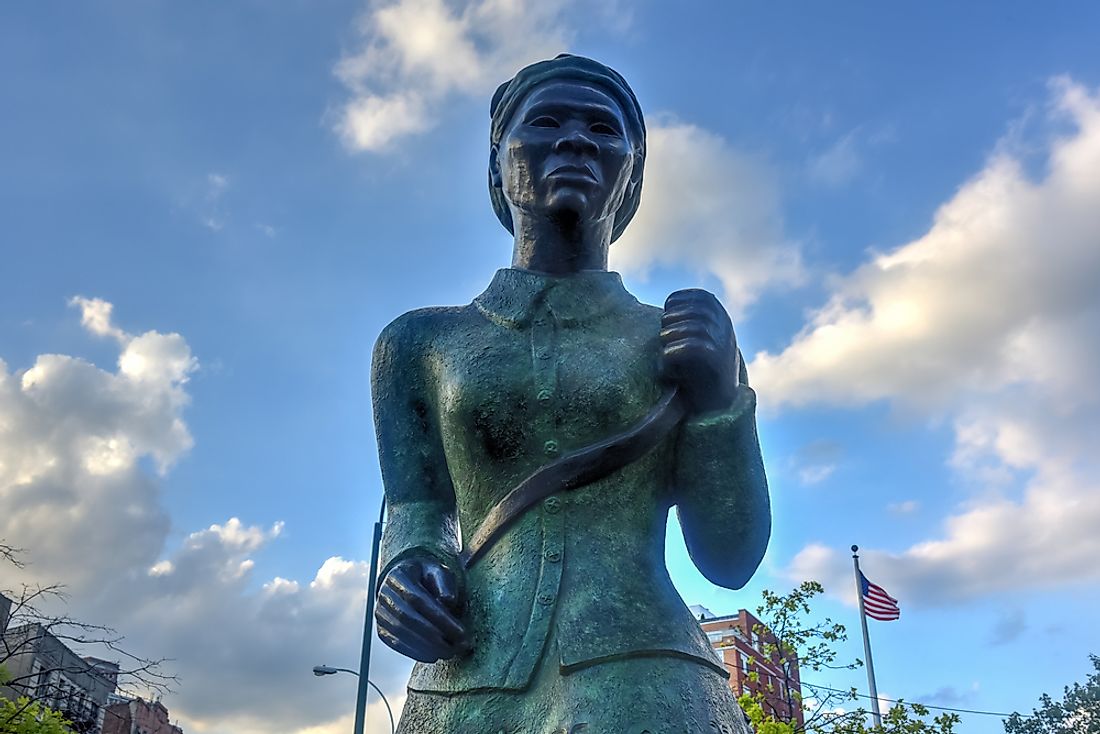Who Was Harriet Tubman?

Harriet Tubman was born as a slave in Dorchester County, Maryland, the daughter of Benjamin Ross and Harriet Green, both Ashanti African slaves. The exact date of her birth is unknown, but it is thought to have been in 1820 on the plantation of Edward Brodess. She was one of eleven children, but her older siblings were sold to other owners down further south. Called Araminta at birth, Harriet took the name of her mother sometime in her teens. She started out as a household worker, but was soon transferred to the fields, work which she preferred more. She did not learn to read and write as a child, and was often rented out by her owner to work for others. By this was she was given the opportunity to earn some money, albeit little, for herself.
4. Career
In 1844, Harriet married John Tubman, a free African American man. However, it did not seem to be a successful union, as John later remarried. In 1849, Harriet successfully planned her escape to freedom in the North. She used the Underground Railroad, a network of safe-houses. It was operated mostly by abolitionist Quakers, and open to runaway slaves in an attempt to help them reach their freedom. However, after arriving in Pennsylvania, Harriet decided to return to Maryland to bring her family up north with her as well. Harriet made numerous such trips over the next twelve years, bringing seventy people out of slavery. Some sources even say her efforts helped around 300 people escape slavery.
3. Major Contributions
Abolitionist William Lloyd Garrison bestowed upon Harriet Tubman the name of "Moses". Indeed, just like the ancient Jewish prophet did so long before her, Harriet led many of her people out of bondage. Her use of African-American spirituals to pass crucial escape information to slaves became a crucial resource, and the songs took on new meanings. She saved the lives of many people, avoiding capture both of herself and of many of those she was guiding. On her work as a “conductor” on the Underground Railroad, Harriet said, “I never ran my train off the track and I never lost a passenger.” Harriet was also a Union spy during the American Civil of from 1861 to 1864, and was said to have previously helped abolitionist John Brown with his plans to attack Harper’s Ferry.
2. Challenges
As a child, Harriet received a head injury which left her with epileptic fits. These seizures made it difficult for her to do her work in the fields, and resulted in beatings and other mistreatment. The effects of the injury remained with her throughout the remainder of her life. The Fugitive Slave Law of 1850, passed just as Harriet began making her trips with the Underground Railroad, made it even more dangerous for escaped slaves in the North as it increased provisions for returning slaves caught in another state to be returned to their owners. However, Harriet worked with others to settle those in most in danger in beyond the nations borders in Canada, from where they wouldn't be returned to their "masters".
1. Death and Legacy
At the 1896 inaugural meeting of the National Federation of Afro-American Women, Harriet was the key speaker. The Harriet Tubman Home for the Aged was opened in New York in 1908, named in her honor. As a woman and a former slave, Harriet Tubman became an icon for those seeking justice, and her spirituals were sung in the marches of the Civil Rights movement half a century after her death. Everything from stamps to U.S. Naval ships to asteroids have borne her name. She died in 1913, and her parting words were those of Jesus: “I go to prepare a place for you.” Her courageous accomplishments freeing slaves, fighting in the Civil War, and speaking on behalf of women’s rights have inspired women and men to continue the fight for justice and freedom for all.







